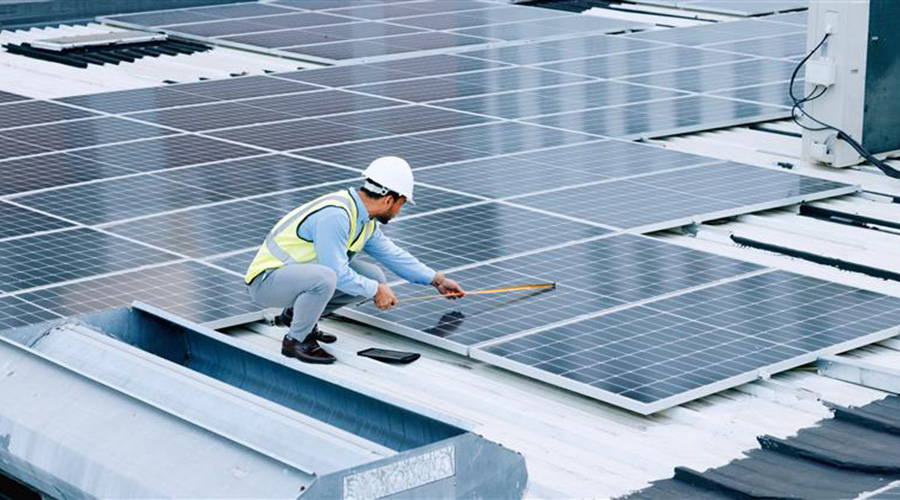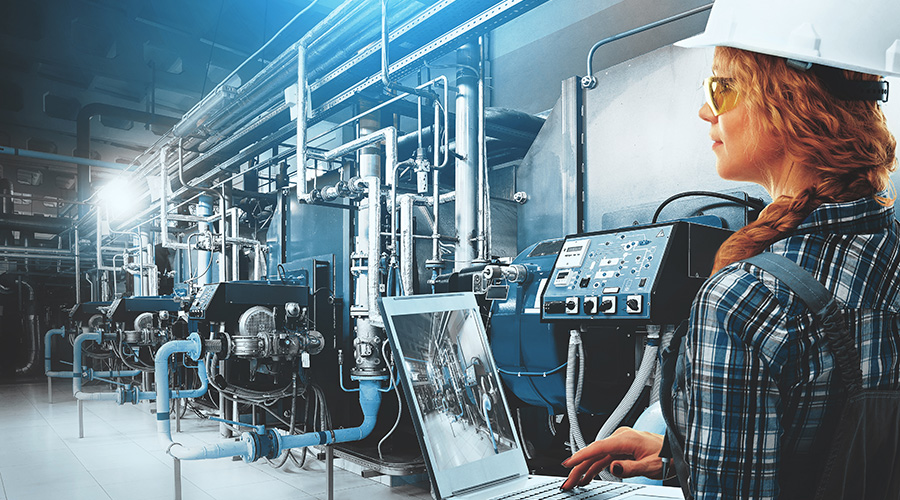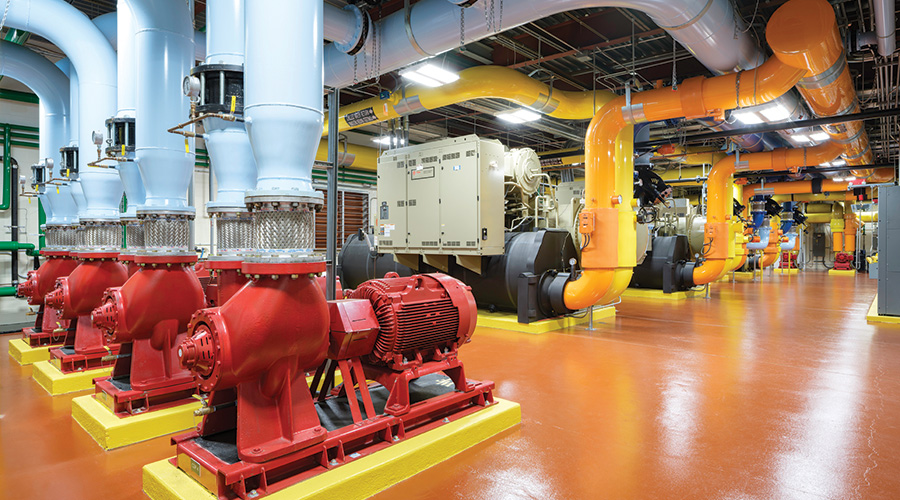Chiller Upgrades: Drives, Cooling Towers and Air-Handling Units
Plutz has been a Marriott facility professional for 28 years, but he never has led a project of the magnitude of the chiller retrofit. The hotel completed the project in three phases. First, Plutz and his team had to measure temperature deltas in their air-handling equipment and make adjustments for chilled-water balancing. Second, they replaced the cooling towers, which had outlived their useful lives and were inefficient. Third, the team had to rebuild the existing chillers. The key to completing all this work properly was minimizing disruption to facility operations.
“From the cooling-tower perspective, it was doing this project without losing equipment or having downtime,” Plutz says. “That’s the main thing.”
Plutz’s belief in proactive maintenance helped determine the chiller equipment was not reaching benchmarks the hotel had put in place. The analysis discovered the chiller rotors would have failed if the hotel had not taken action.
“Given the fact that we’re in Florida, and as big as this hotel is, air conditioning is key,” Plutz says. “If we lost a machine, that could potentially be a disaster.”
The project had a handful of key elements, including:
• Chillers. The hotel rebuilt three 1,350-ton centrifugal chillers.
• Refrigerant. The team removed 15,000 pounds of chlorofluorocarbon (CFC) R-500 and replaced it with 15,000 pounds of non-ozone-depleting hydrochlorofluorocarbon (HCFC) R-134a. Some capacity loss occurred due to the conversion, but the refrigerant is more efficient, Plutz says.
• Drives. The hotel specified two variable-frequency drives (VFD) on the 1,500-horsepower chiller motors. It also installed three VFDs on the secondary chilled-water loop, Plutz says.
• Cooling towers. The hotel installed three new cooling towers with 300 nominal tons of additional capacity. The stainless-steel towers feature VFDs, and the hotel reduced motor horsepower (hp) by 400 hp.
• Air-handling units. The team measured and adjusted all air-handling chilled-water flow for optimum performance and installed VFDs on ballroom air-handling units equipped with carbon-dioxide sensors to produce healthy indoor air quality (IAQ).
“Overall, the job went smooth,” Plutz says. “There’s always days that you get heartburn, but for the most part, we really didn’t have any snafus where we lost the building. It was very methodically planned.”
Plutz came to the resort 10 years ago, and after analyzing the existing HVAC system, he knew changes eventually would have to be made.
“The hotel was built in 1986, and with constant-volume, primary-secondary systems, there’s inherent problems guaranteed,” he says. “Somewhere across the range of operation, you have problems. That’s why that design doesn’t exist anymore. We knew what we had. We put some conservative numbers against it, and it’s paying off a lot more than anybody figured.”
Related Topics:















